Around the world over thousands of years, patients have received root-cause holistic treatment for their diseases with personalized
treatment, diet and lifestyle modification recommendations. Read the inspiring true stories of practitioners who heal people and who recovered
from their problems after Diabetes-Type-II treatment at their clinics. Many have been generous to share their knowledge and experience for the benefit
of other holistic experts and patients alike. Many practitioners share their Case Studies and the healing powers of Diabetes-Type-II and related therapies
as they heal people who benefited from our expertise.
Sulforaphane reduces hepatic glucose production and improves glucose control in patients with type 2 diabetes
June 2017
A potentially useful approach for drug discovery is to connect gene expression profiles of disease-affected tissues (“disease signatures”) to drug signatures, but it remains to be shown whether it can be used to identify clinically relevant treatment options. We analyzed coexpression networks and genetic data to identify a disease signature for type 2 diabetes in liver tissue. By interrogating a library of 3800 drug signatures, we identified sulforaphane as a compound that may reverse the disease signature. Sulforaphane suppressed glucose production from hepatic cells by nuclear translocation of nuclear factor erythroid 2–related factor 2 (NRF2) and decreased expression of key enzymes in gluconeogenesis. Moreover, sulforaphane reversed the disease signature in the livers from diabetic animals and attenuated exaggerated glucose production and glucose intolerance by a magnitude similar to that of metformin. Finally, sulforaphane, provided as concentrated broccoli sprout extract, reduced fasting blood glucose and glycated hemoglobin (HbA1c) in obese patients with dysregulated type 2 diabetes.
The effect of SFN-containing broccoli sprout extracts was studied in T2D patients
Prompted by these findings in vitro and in vivo, we set out to investigate the effects of SFN on glucose control in T2D patients. SFN has been provided at high concentration as broccoli sprout extracts (BSEs) in several clinical studies for cancer, chronic obstructive pulmonary disease, autism, and inflammatory diseases (www.clinicaltrials.gov) [we used high-performance liquid chromatography (HPLC)–purified SFN at 99.5% in our cell and animal studies, but this has not been used for human studies so far].
Here, we used a dried powder of an aqueous extract of broccoli sprouts, which contains high concentrations of glucoraphanin, the inert glucosinolate precursor of SFN.
Glucoraphanin is converted to SFN by the release of intrinsic sprout myrosinase during chewing and also by human enteric bacteria (37–40). After intake, the plasma concentration of SFN rises within 1 hour with a mean half-life of 1.77 ± 0.13 hours, but SFN exerts a sustained effect on gene expression (41). Renal tubular secretion is suggested to play a major role in the elimination (37). Safety studies using BSE corresponding to 50 to 400 ?mol SFN daily have shown that BSE is well tolerated without clinically significant adverse effects (42–45).
BSEs improves fasting glucose and HbA1c in obese patients with dysregulated T2D
We observed a clear association between HbA1c levels at start of treatment and ?HbA1c in response to BSE treatment (?HbA1c, 0.2 mmol/mol reduction per 1 mmol/mol higher HbA1c at start; P = 0.004, Fig. 4A), whereas there was no association in the placebo group (P = 0.5). There was also an association between BMI and ?HbA1c in BSE-treated patients (?HbA1c, 0.4 mmol/mol reduction per 1 kg/m2 higher BMI; P = 0.015 for the BSE group; not significant for the placebo group).
BSE is most effective in obese patients with dysregulated T2D
Glucose production is exaggerated in dysregulated T2D, which is reflected in the higher fasting blood glucose among the patients with dysregulated T2D in our study (8.6 ± 0.2 in patients with dysregulated T2D versus 7.5 ± 0.2 mM in patients with well-regulated T2D; P = 0.0001). Consequently, BSE reduced fasting glucose in patients with dysregulated T2D but not in patients with well-regulated T2D (P = 0.023). We also observed an association between BMI and BSE-induced change in HbA1c (P = 0.017), and HbA1c was significantly reduced after BSE treatment in obese patients with dysregulated T2D (P = 0.034; Fig. 4B). BSE was more effective in lowering fasting blood glucose in patients with elevated plasma triglyceride concentrations (P = 0.046 for the association between plasma triglycerides at study start and ?glucose; an inverted association was observed in placebo-treated patients; P = 0.008; Fig. 4D). It is also notable that BSE was more effective in lowering fasting blood glucose in patients with high HOMA-IR (P = 0.058 for the association between HOMA-IR and ?glucose; Fig. 4E), and the BSE-induced reduction of HbA1c correlated with high fatty liver index (P = 0.045; Fig. 4F).
No severe adverse effects of BSE were reported
Most patients tolerated the BSE well. Eight patients receiving BSE and seven patients receiving placebo reported gastrointestinal side effects such as loose stools and flatulence, typically present during the first few days of the treatment period, after which these symptoms disappeared. Ten BSE-treated and five placebo-treated patients reported mild respiratory infections, and there were also a few other reported adverse events, including orthopedic ailments, most likely unrelated to the study compound (table S5). Of the 103 patients, 6 (5 with BSE and 1 with placebo) discontinued the study because of nausea (2 patients), headache (1 patient), glucose above 15 mM (one of the exclusion criteria; 1 patient), hospital visit for suspected ileus (later successfully treated; 1 patient), and depression (1 patient on placebo) (table S6).
DISCUSSION
Together, our data show that SFN reduces glucose production, partly via NRF2 translocation and decreased expression of key gluconeogenetic enzymes, and that highly concentrated SFN administered as BSE improves fasting glucose and HbA1c in obese patients with dysregulated T2D. BSE was well tolerated, and SFN reduced glucose production by mechanisms different from that of metformin. SFN also protects against diabetic complications such as neuropathy, renal failure, and atherosclerosis in animal models because of its antioxidative effects (49–52).
Our data suggest that BSE has a direct effect on gluconeogenesis rather than hepatic insulin sensitivity, but the degree of IR may still influence the efficacy of BSE via altered constitutive NRF2 activity. It has been shown that insulin signaling activates NRF2 via phosphatidylinositide 3-kinase (53). Moreover, studies in cardiomyocytes have shown that NRF2 is activated at the early stages of T2D to protect against increased reactive oxygen species but is reduced at later stages of the disease (54). This is further supported by observations of reduced NRF2 expression in animals with IR (55, 56) and hepatic steatosis (27, 28).
It is not surprising that BSE was most effective in obese patients with dysregulated T2D. First, our animal experiments showed an effect of SFN on glucose control in metabolically dysregulated animals on a HFD but not in metabolically well-regulated animals on a low-fat diet. Second, gluconeogenetic rate was correlated with body weight in mice with diet-induced diabetes, and SFN reduced gluconeogenetic rate specifically in the heaviest mice. Third, hepatic glucose production is often exaggerated in patients with high HbA1c, whereas patients with low HbA1c primarily have an impairment of peripheral glucose uptake (47). Fourth, it has been shown that hepatic glucose production is increased particularly in obese T2D patients, potentially via elevated free fatty acids (34–36).
There is abnormal regulation of hepatic glucose production early in the development of T2D, but it is typically compensated for by increased insulin secretion (57). SFN has been shown to protect from pancreatic ? cell damage in animals (58). We observed no changes in insulin secretion, measured as HOMA-B and insulinogenic index, and BSE did not affect fasting glucose or HbA1c in well-regulated T2D patients. However, we observed that SFN prevented the development of hyperglycemia in diet-challenged rats, and it would be of interest to longitudinally study the long-term effects of BSE on glucose production and insulin secretion capacity in prediabetic individuals.
Glitazones and metformin were not ranked particularly high in the drug comparisons, suggesting that they do not affect the hepatic gene coexpression network that was associated with hyperglycemia in this case but exert their effects via other pathways. It is not entirely surprising because these drugs have different mechanisms of action from that of SFN.
It has been demonstrated that 1% [DCCT (Diabetes Control and Complications Trial) units] decrease of HbA1c corresponds to 37% reduced risk of microvascular complications (59). BSE treatment reduced HbA1c from 57.1 mmol/mol (or 7.38%) to 53.4 mmol/mol (or 7.04%) in obese patients with dysregulated T2D. The patients thereby reached the 7% treatment goal recommended by the American Diabetes Association (60), which is likely to represent a clinically meaningful effect.
Although the effect of BSE on glucose production was abolished in vitro when the conversion of glucoraphanin to SFN was prevented, we cannot fully determine that SFN explains the effect of BSE given to patients. High doses of BSE cannot yet be recommended to patients as a drug treatment but would require further studies, including data on which groups of patients would potentially benefit most from it. Finally, the findings provide support for using disease signatures based on coexpression networks to interrogate drug signatures, thereby using the large public repositories of gene expression data, as one of many strategies for repurposing compounds of immediate clinical relevance.
/ onclick=”MoreLine(‘15292’, ‘Sulforaphane reduces hepatic glucose production and improves glucose control in patients with type 2 diabetes’)”>
…more
/>Science Translational Medicine
Therapeutic effects of psyllium in type 2 diabetic patients.
September 2002
The aim of this study was to evaluate the effects of psyllium in type 2 diabetic patients.
DESIGN:
The study included three phases: phase 1 (1 week), phase 2 (treatment, 14 g fibre/day, 6 weeks) and phase 3 (4 weeks). At the end of each phase a clinical evaluation was performed after the ingestion of a test breakfast of 1824.2 kJ (436 kcal). Measurements included concentrations of blood glucose, insulin, fructosamine, GHbA(1c), C-peptide and 24 h urinary glucose excretion. In addition, uric acid, cholesterol and several mineral and vitamin concentrations were also evaluated.
SETTING:
The study was performed at the Department of Pharmacology, Toxicology and Nursing at the University of León (Spain).
SUBJECTS:
Twenty type 2 diabetic patients (12 men and 8 women) participated in the study with a mean age of 67.4 y for men and 66 y for women. The mean body mass index of men was 28.2 kg/m(2) and that of women 25.9 kg/m(2).
Results:
Glucose absorption decreased significantly in the presence of psyllium (12.2%); this reduction is not associated with an important change in insulin levels (5%). GHbA(1c), C-peptide and 24 h urinary glucose excretion decreased (3.8, 14.9 and 22.5%, respectively) during the treatment with fibre (no significant differences) as well as fructosamine (10.9%, significant differences). Psyllium also reduced total and LDL cholesterol (7.7 and 9.2%, respectively, significant differences), and uric acid (10%, significant difference). Minerals and vitamins did not show important changes, except sodium that increased significantly after psyllium administration. CONCLUSIONS: The results obtained indicate a beneficial therapeutic effect of psyllium (Plantaben) in the metabolic control of type 2 diabetics as well as in lowering the risk of coronary heart . We also conclude that consumption of this fibre does not adversely affect either mineral or vitamin A and E concentrations. Finally, for a greater effectiveness, psyllium treatment should be individually evaluated.
/ onclick=”MoreLine(‘11624’, ‘Therapeutic effects of psyllium in type 2 diabetic patients.’)”>
…more
/>Eur J Clin Nutr. 2002 Sep;56(9):830-42. PMID: 12209371
Inhibition of alpha-glucosidase by aqueous extracts of some potent antidiabetic medicinal herbs.
January 2005
/ onclick=”MoreLine(‘11622’, ‘Inhibition of alpha-glucosidase by aqueous extracts of some potent antidiabetic medicinal herbs.’)”>
…more
/>Prep Biochem Biotechnol. 2005;35(1):29-36. PMID: 15704495
High fructose corn syrup and diabetes prevalence: A global perspective.
November 2012
/ onclick=”MoreLine(‘11528’, ‘High fructose corn syrup and diabetes prevalence: A global perspective.’)”>
…more
/>Glob Public Health. 2012 Nov 27. Epub 2012 Nov 27. PMID: 23181629
Statins and Risk of Diabetes: An analysis of electronic medical records to evaluate possible bias due to differential survival.
December 2012
/ onclick=”MoreLine(‘11527’, ‘Statins and Risk of Diabetes: An analysis of electronic medical records to evaluate possible bias due to differential survival.’)”>
…more
/>Diabetes Care. 2012 Dec 17. Epub 2012 Dec 17. PMID: 23248196
Severe statin-induced rhabdomyolysis mimicking Guillain-Barré syndrome in four patients with diabetes mellitus treated with fusidic acid.
June 2010
An interaction between fusidic acid and HMG coenzyme A reductase inhibitors (statins), resulting in rhabdomyolysis, has been described. Pain and mild weakness are common presenting symptoms. CASE REPORT: We report four patients with Type 2 diabetes prescribed long-term statin treatment who, following treatment with fusidic acid, presented atypically with painless, severe flaccid paralysis suggestive of Guillain-Barré syndrome. This, together with nerve conduction studies consistent with Guillain-Barré syndrome, resulted in the delayed recognition of rhabdomyolysis in these cases. CONCLUSIONS: The addition of fusidic acid can precipitate rhabdomyolysis in patients with diabetes already taking a statin. This can present with rapidly progressive weakness resembling Guillain-Barré syndrome. We recommend that creatine kinase is checked in patients with diabetes on statin therapy who present with profound weakness and routinely in those commenced on prolonged courses of fusidic acid.
/ onclick=”MoreLine(‘11512’, ‘Severe statin-induced rhabdomyolysis mimicking Guillain-Barré syndrome in four patients with diabetes mellitus treated with fusidic acid.’)”>
…more
/>Diabet Med. 2010 Jun ;27(6):696-700. PMID: 20546290






